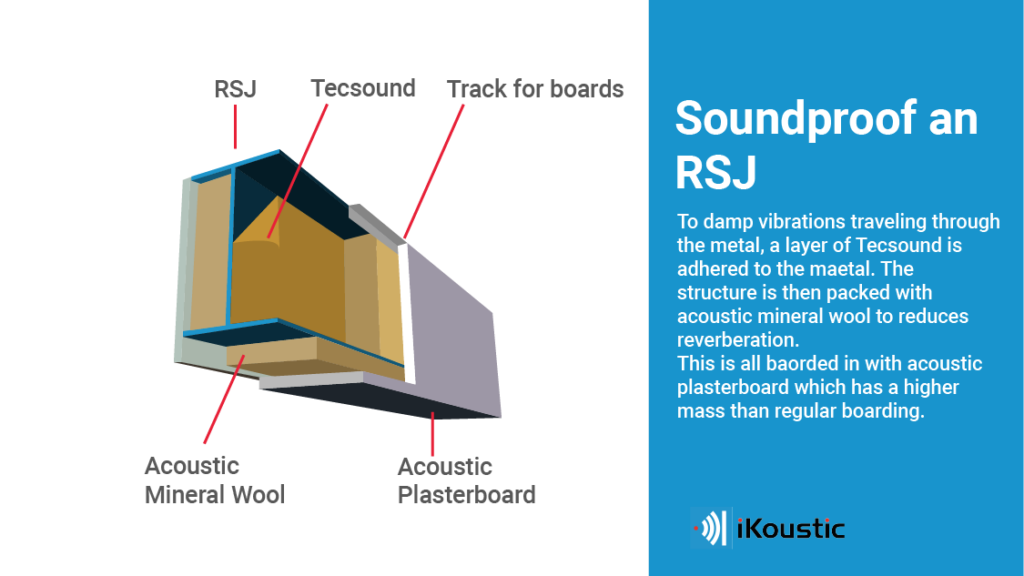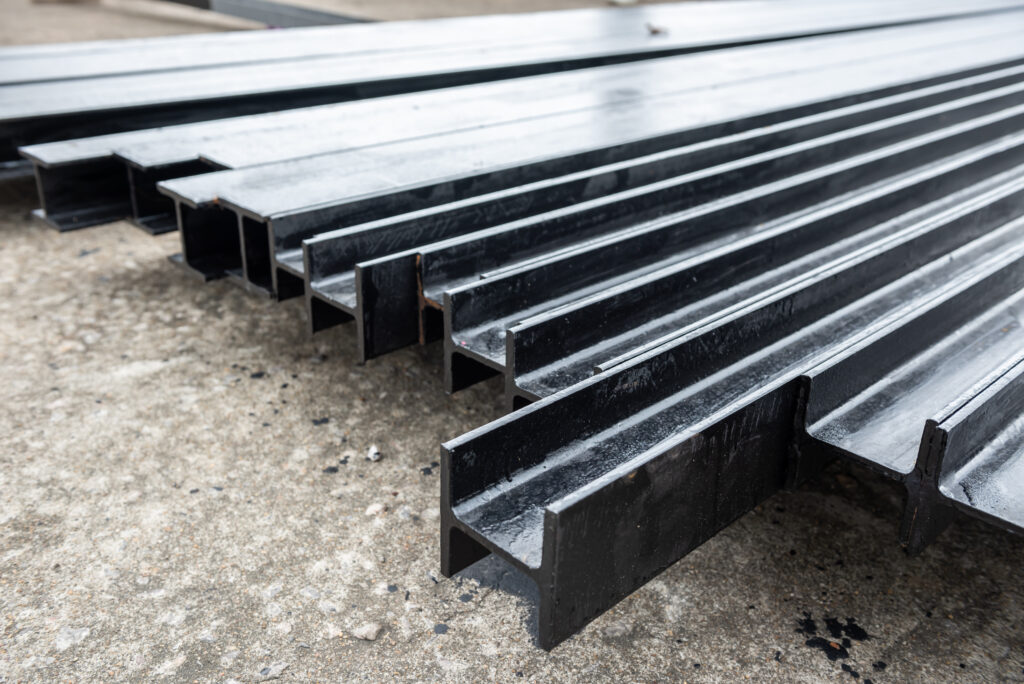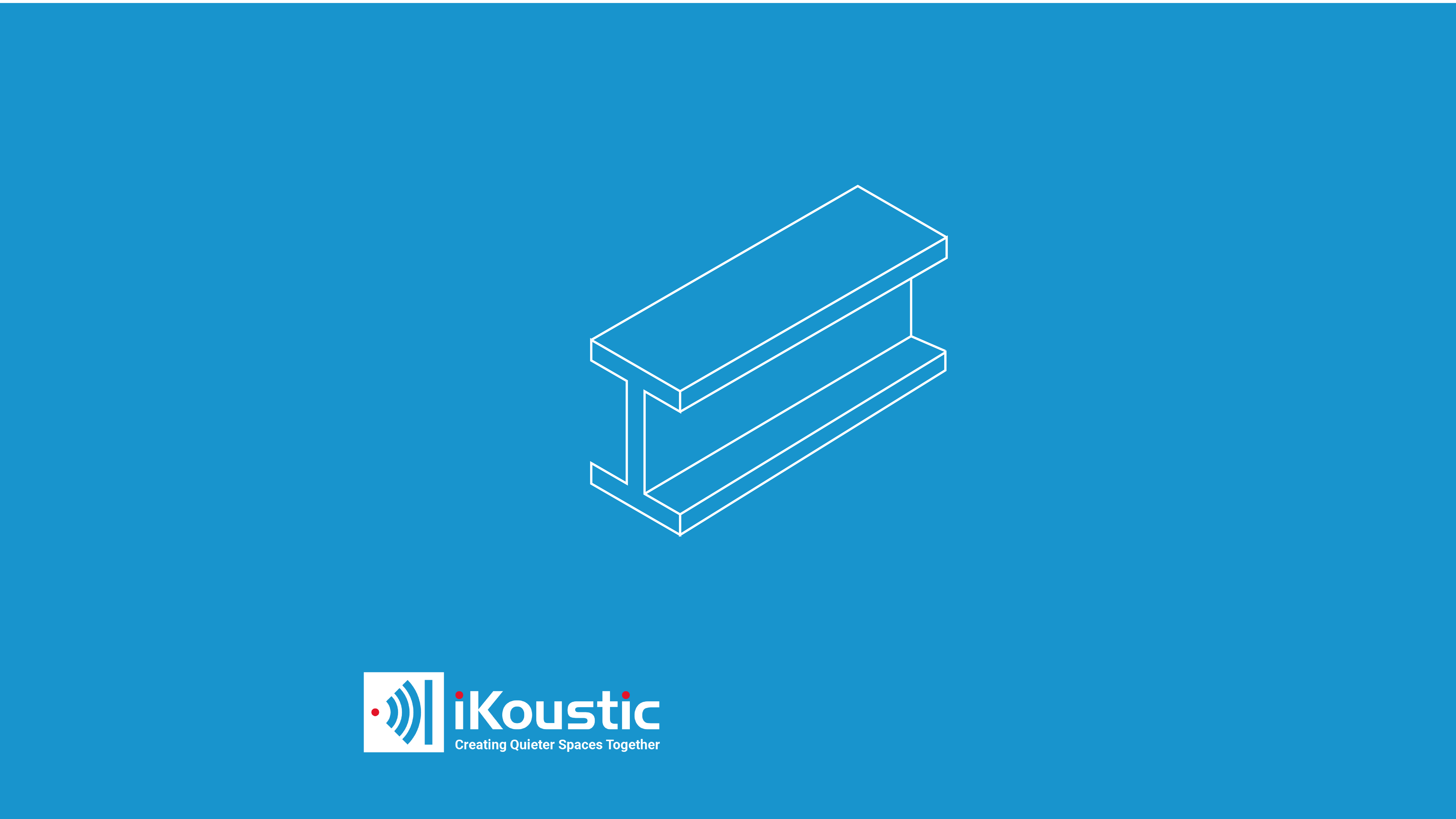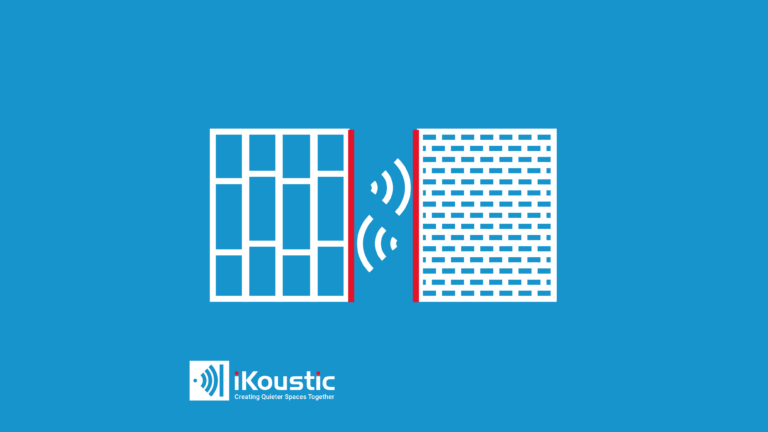How to soundproof an RSJ – fast and easy
To soundproof an RSJ is fast and easy using a mix of vibration-dampening and absorption materials. Steel is a good conductor of sound vibration energy, so an RSJ can transport sound around your home easily. To soundproof an RSJ effectively, we use materials that are poor conductors and ‘leach’ sound vibration energy out of the supporting bar.
Often when ceilings are soundproofed, RSJs can be overlooked. However, they are important to treat as the steel bars can transport sound around a building from room to room. This is known as flanking transmission; when sound uses a route around, over or under a partition.

Step 1 – Soundproofing an RSJ
Cover the exposed RSJ with a layer of self-adhesive Tecsound. This is a vibration-dampening material with elastic properties. While steel is unable to flex with the vibrations (which would waste energy and reduce noise), the visco-elastic membrane draws vibrations out of the metal. This semi-fluid material ‘traps’ the vibrations and exhausts sound, preventing it from traveling along the steel as far.
Step 2 – Soundproofing an RSJ
Next, acoustic mineral wool needs to be pushed into the cavities. This prevents amplification through reverberation in the would-be empty space. Acoustic mineral wool must have a mass of 45kg/m3 or more.
Step 3 – Soundproofing an RSJ
Lastly, tracks can be added to fix acoustic plasterboard to. Acoustic plasterboard should encase the RSJ and will add additional mass to insulate the structure. Acoustic plasterboard has a higher mass than regular plasterboard and is ready to skim plaster over.
Around this, acoustic mineral wool is packed to reduce reverberation in cavities and isolate the structure from the final layer which is acoustic plasterboard. Acoustic plasterboard has more mass than regular plasterboard and provides resistance to airborne noise.
Why should you soundproof an RSJ?

You should soundproof an RSJ to control the transmission of sound and reduce flanking transmission between rooms. Because an RSJ is a good conductor of sound, it can transmit noise from one room and into another. If only the ceiling is soundproofed, the RSJ leaves a weak link. It is like trying to hold water in a sink with no plug. When sound finds an alternative route to travel around, over, or under a soundproofed partition (like the ceiling), it is known as flanking transmission. This can be a big reason for soundproofing partitions not performing well. Treating an RSJ is quick and easy to do as part of ceiling soundproofing.
Would normal insulation work as well as acoustic mineral wool?
No, normal insulation would not work as well as acoustic mineral wool because the mass is too low. High mass is needed to be able to soundproof as it is harder for sound to travel through. Imagine if you tried to walk through a room of balloons; you could easily knock them aside. Now imagine the room was full of lead balloons; you can’t easily move them and become stuck.
For mineral wool to be considered to have acoustic properties, it must have a mass of 45 kg/m3 or above. Here at iKoustic, we stock acoustic insulation all the way up to 100 kg/m3! Packing this around the RSJ reduces reverberation inside the cavity. When an RSJ is boxed in, the shape creates two large cavity spaces. If left untreated, sound can bounce around here and aid the transmission of noise between spaces.
Can I soundproof an RSJ without Tecsound?
While you can soundproof an RSJ without Tecsound, it is not the best method. By installing Tecsound directly to the vibrating metal, the ability to conduct sound is properly addressed. The Tecsound reduces the amount by which the metal is able to move so sound cannot travel as easily around your home.








